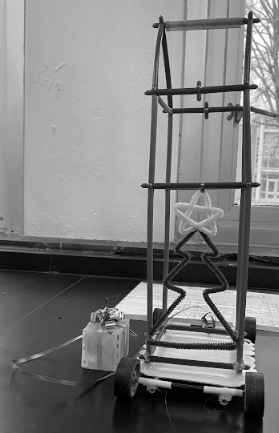Weather phenomenon deemed ‘Texas Freeze’; Millions left in the dark and at complete loss
Rolling blackouts left millions without communication or power. Texas citizens continue to feel the long term effects of this disaster.
March 18, 2021
Please note that Cry of the Hawk typically covers stories concerning our community and its members. But, we also know how important it is to cover issues and topics outside of our area. This article features Houston teacher, Ms. Sara Gonzales, a friend of NH journalism teacher Mrs. Jennifer Chandler. Gonzales and Chandler met while attending a journalism institute at Arizona State University many years ago.
“It’s so hard to look at your college degree and see that it has water damage on it. Everything that I have worked for my entire life is gone,” Sara Gonzales, a teacher in Northwest Houston expressed.
Millions of people without power and countless burst water pipes, the definition of a humanitarian crisis. It all began with a drop in temperatures resulting in a last-resort measure for rolling blackouts.
According to the Guardian, “Texas is unique among the 48 contiguous US states in that it relies on its own power grid.” Texas has more control over electricity in its state, but in return, there are fewer power plants the state can rely on for power.
The equipment at the power plants could not handle the exceptionally low temperatures so, the choice was between shutting down power for customers or chancing a collapse of the grid altogether. On February 14, Gonzales stated, “lights were flickering five or six times and then the electricity went out.”
Gonzales explained her biggest concern was that “we have zero preparation for roads, nothing if we were to have a massive storm.” And she indicated that a week before the storm, “I had kids wearing shorts to school and most of us don’t have warm winter clothes,” meaning the Texans were not prepared in several ways for what was coming.
As reported by the Washington Post, “Houston, which was placed under its first wind chill warning, observed a wind chill of 1 degree, its lowest since at least 1990. And its high temperature of 25 degrees was its fourth coldest on record.”
Gonzales revealed, “I got to the point that I was so cold Monday evening, I noticed that my toes were starting to turn purple. Inside my house, you could see my breath and the dog water had a frozen layer on top.” She said, “that’s when I started getting a little concerned because that’s not normal.”
On Tuesday, now three days after power was shut off, the local grocery stores began opening. Gonzales explained, “As I was about to leave, I hear the trickling of water. I went into the kitchen and water was coming out of a light fixture.”
She had water spraying out of behind the cabinets in the kitchen. Water was spraying out of the walls, flooding into her master bedroom, and coming out of the wood. “The water sprayed out as if you were going through a car wash,” she revealed.
“I had been using everything I had to keep my dogs and I warm and now it was all soaked from trying to dry up the water,” Gonzales told.
With the recovery process in full swing, Gonzales said, “in one day I contacted over a hundred plumbers.” But the problem did not end there, she indicated, “plumbers were charging five hundred fifty dollars in service just to come out, so in times of need and a national crisis there’s always a concern of price gouging.”
The main cause of the damage: at least a dozen breaks in Gonzales’s water pipes. The expenses just for her pipes costs at least $550 for each fix. To make matters worse at this point, a week after the storm, the damage had started spreading. “What we know now is that every single ceiling, almost every wall, the bathroom vanities, and the kitchen cabinets have to be taken out,” Gonzales told.
“I have used my entire life savings already, trying to get my house back in order” she expressed.
Gonzales said that buying her home nine years ago was such an exciting thing and that she loves her little house with her two dogs. “To see it in the state that it’s in right now is so hard. And it’s hard to come to work, it’s hard to be present, and it’s hard to keep moving every day when you know your whole world has just gone underneath you. Because people haven’t done their job,” Gonzales explained.
“I had done everything they had said…I had wrapped my pipes outside,” Gonzales voiced her frustration.
“A lot of this could have been prevented had our state government done the necessary updates,” regarding the power grids and cold weather preparation, she clarified. “Instead, people’s lives have been put at stake. People have died because of this disaster. People froze to death in their homes. That is not okay. Your home should be a safe space,” she continued.
Gonzales believes the first step Texas officials should take, on the road to long-term recovery is to,“take the politics out of this. This is people’s lives. This is not a Republican issue. This is not a Democratic issue.”
“You have several million people in this state that have been directly impacted by this. Figure out what happened and make changes. They need to stop playing a game with people’s lives,” she continued.
Gonzales wants people to know, “This…what happened is because people failed us. And because they failed us, now our livelihoods are at stake. And I don’t think that’s fair. I don’t think that’s right when their job is to serve and to help do things for others.”
“I guess I’m lucky that I am alive,” Gonzales humbly admits. The community has helped Gonzales by providing her with food, making her blankets, and ordering much needed dog supplies. A close friend of hers, also started a GoFundMe to help cover any essential expenses.
But, what made the temperature drop a record low and created the catastrophe, in the first place? According to CBS, the jet stream routinely curves around the polar vortex, keeping the cold air trapped inside.
But when the Arctic warms, the jet stream weakens and elongates, allowing the cold air to plunge south. Much more South, the cold plunged further than almost ever, 4,000 miles from the North Pole.
The “Texas Freeze” set numerous records and is expected to be on the list of most expensive U.S. natural disasters of 2021, as stated by the Washington Post. And more than 30 people died in Texas alone.












